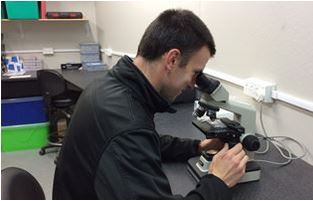



We Need to Beat Facial Eczema Flare-Up
A survey of over 100 New Zealand farms revealed a need to address a fungal condition – facial eczema.A third of the North Island cattle surveyed had sub-clinical damage, despite a lack of clinical signs.
Affecting the liver of cows, the condition can lower milk yield, resulting in red and peeling faces in clinical cases.
However, an estimated 95 per cent of cases are sub-clinical.
The time has come to act, stressed veterinarian Emma Cuttance, who has suggested a range of action points for the coming facial eczema season.
“The facial eczema ‘season’ will vary depending on farm location and climate,” writes Mrs Cuttance. “So, it’s important to base actions on spore counts rather than certain months.”
Plan the Control Method

Put a plan in place and start control early, advises the New Zealand vet, who writes that every management system for facial eczema has gaps or weaknesses, whether it is zinc sulphate water treatment or fungicide spraying. If those gaps are not identified and addressed, cows will not be fully protected.
It is important to review the situation regularly to check your control method is working.
Spore Counting Invaluable
Pasture spore counting is an excellent tool to identify pasture spore count trends. However, research from 2012 to 2014 found the variability between farms is very large.
This is because every farm, paddock and even sections of paddocks, contain a slightly different micro-climate for the spore-producing fungus.
It is possible to have spore counts varying by as much as a 500,000 spores/g pasture or more between farms and even paddocks.
While rainfall, minimum temperatures, humidity, topography and regional spore counts give some indication of spore count trends, when regional spore counts start trending upwards to reach 20,000 spores/g of pasture, it is important to gather a more accurate picture of your farm.
Identify four paddocks representative of the farm and monitor these paddocks regularly for trends in rising spore counts. Use this trend to base management decisions on – it is a preferable method to spore counting a few of the paddocks the cows might graze in the next 24-48 hours.
It is not uncommon for spore counts to decrease unusually early or unusually late. Therefore do not stop the management programme until the spore counts are trending down and are consistently below 10,000 spores/g of pasture for three weeks.
February's Inside Dairy will feature a follow-up article on facial eczema management programmes and how to find out if your programme is working with the help of a veterinarian.


